The Haywood Patent Narrow Fabric Loom has been evolved as a result of over ten years' research, owing to the admitted fact that the ordinary type of smallware loom is far from being a really satisfactory machine. In many respects it is entirely original in design and contains a number of features which are rotected by patent, not only in England, but in all European countries and the U.S.A. An outstanding fature of this Narrow Fabric Loom is its all-metal construction, including the shuttle. It is made in comparatively small sections each of which is a complete unit. Two, three or more sections can be coupled together and driven from a common source if so desired. For the execution of small orders the advantage of a unit with few spaces is apparant. The Loom is designed to weave material from 1/2 in wide up to 2 in wide and the number of shuttle in the standard section is as follows:
The Haywood Loom is particularly suitable for weaving silk and artificial silk ribbons, but is equally efficient upon all classes of goods which fall within its capacity, an example being the weaving of spindle tapes for ring spinning and ring doubling frames. The shuttle mechanism is by means of rack and pinion the basis of the reciprocating motion being a fabroil rack gearing with cut steel pinions The Beat-up Motion is a patent feature of the loom. The effect of the arrangement is to give the slay an unusually long dwell in order to allow the shuttles ample time to cross the shed, without fear of catching the warp threads and, at the other end of the stroke, to give a rapid beat-up blow. The Heald Frames and Healds are also of all-metal construction and particular attention has been devoted to the shedding cams so that smooth changing of the warp threads is ensured even when running at high speeds. A most efficient Let-off Motion is employed on the Ribbon and Tape Looms embodying a patent compensating motion which ensures an even tension by self-adjustment when stress is put upon the warp threads during the changing of the shed. The Take-up Roller is driven through a double clutch arrangement and simply by altering the position of a link which connects the beat-up arm to the lever actuating the take-up motion itself, any desired number of picks per inch from 20 to 120 can be obtained without the employment of change wheels. According to class of material to be woven, the take-up roller may be covered with abrasive or cloth or knurled upon the surface. The loom is driven by means of a single pulley through a constantly revolving shaft. It is stoped and started by means of an efficient cone friction clutch which is thrown out of gear by the patent automatic Weft Stop Motion whenever a weft thread breaks or a spool runs empty A Warp Stop Motion can be applied when desired, which also acts upon the clutch in a similar manner. The loom is restarted instantaneously by a slight depression of the friction lever. Dobby. The shedding mechanism is by means of cams up to 8 shafts, but the standard loom can be arranged for dobby control, the dobby being placed either above the loom or on the side as illustrated in Fig 3 where floor space is not of vital importance. Jacquard. For patterned ribbons outside the capacity of the dobby a double lift Jacquard can be fitted above the loom as shown in Fig 1 and driven by simple connections to the standard mechanism. |
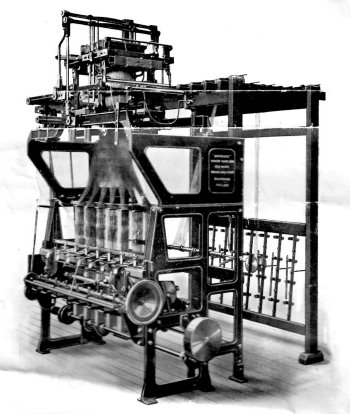
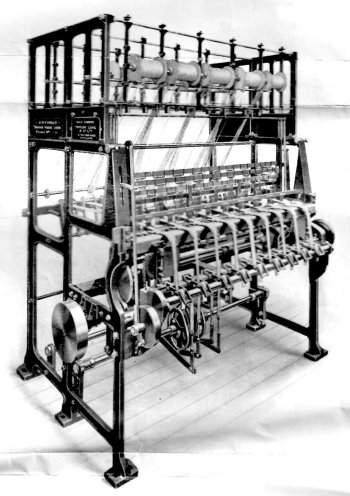
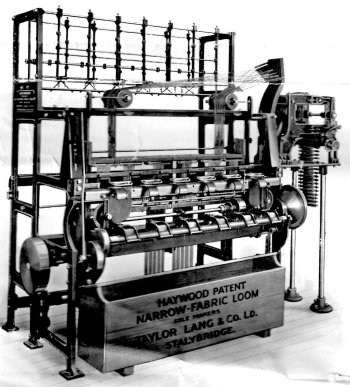
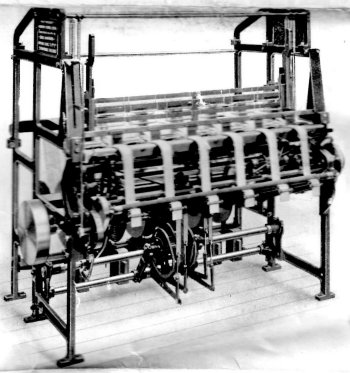
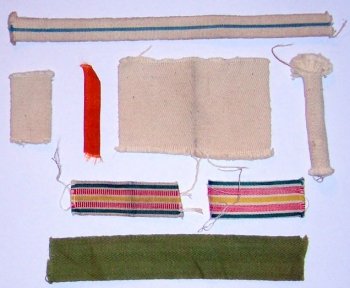
 ----
----